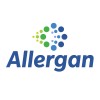
BOTOX® Treatment in Pediatric Upper Limb Spasticity
PediatricsMuscle Spasticity2 moreThis study will evaluate the safety and efficacy of BOTOX® (botulinum toxin Type A) in pediatric patients with upper limb spasticity.

A Multicenter, Open-label, Single Dose Study of the Safety and Efficacy of GSK1358820 (Botulinum...
SpasticityPost-StrokeThis trial is a multicenter, open-label study to evaluate the safety and efficacy of GSK1358820 for treatment in post-stroke subjects with focal wrist, finger and in some cases, thumb spasticity. Qualified patients who complete GSK double-blind study 112958 will be enrolled. Subjects will receive a single treatment session of intramuscular GSK1358820 "200U or 240U (if thumb spasticity is present)". The subjects will be observed until 12 weeks post injection. Outcome measures include changes from baseline at every post injection visit as measured on the Modified Ashworth Scale (MAS), Disability Assessment Scale (DAS) and Global Assessment Scale. Safety parameters will be measured including adverse events, vital signs (pulse and blood pressure) and clinical laboratory tests (haematology, serum chemistry and urinanalysis).

Effect of Cannabinoids on Spasticity and Neuropathic Pain in Spinal Cord Injured Persons
Muscle Spasticity as a Result of Spinal Cord InjuryThis study is being conducted to study the effect of nabilone (a synthetic cannabinoid)on spasticity in spinal cord injured persons.The study will be a phase 2, randomized, placebo-controlled crossover study. Each eligible subject will participate for 26 weeks.Subjects will be randomized to receive either nabilone or placebo during phase 1 of the study. Study drug will be titrated up from 0.5mg daily to a maximum of 3.0 mg daily over the first 11-week phase. Following a 4-week washout period, subjects will be crossed-over to the opposite arm for another 11 week treatment period (phase 2).

Stretching and Strength Training for Improved Gait Function in Children With Spastic Cerebral Palsy...
Cerebral PalsySpastic1 moreThe purpose of this randomized and controlled intervention study is to explore the effect of a physiotherapy intervention targeting contract and spastic hamstring muscles in children having bilateral spastic cerebral palsy (CP), GMFCS I-III: A stretching routine targeting hamstrings (and psoas if short), and a progressive strengthening program on the muscles extending then lower extremities (quadriceps, gluteus maximus and triceps surae) Study hypothesis: Stretching of hamstrings and strength training of the extending muscles in the lower extremities in children with bilateral spastic cerebral palsy will increase popliteal angle, active knee extension, and gait function.

A Randomized Study of Autologous Umbilical Cord Blood Reinfusion in Children With Cerebral Palsy...
Cerebral PalsyCP1 moreThe purpose of this study is to determine the efficacy of a single intravenous infusion of autologous umbilical cord blood (UCB) for the treatment of pediatric patients with spastic cerebral palsy.

A Multicenter, Double-Blind, Randomized, Placebo-Controlled Study to Evaluate the Efficacy and Safety...
Cerebrovascular AccidentThis trial is a multicenter, double-blind, randomized, placebo-controlled study to compare GSK1358820 (Botulinum Toxin Type A, also known as "OnabotulinumtoxinA" or "Botox") with placebo on the efficacy and safety of treatment in poststroke subjects with focal wrist, finger and in some cases, thumb spasticity. Approximately 168 subjects will be enrolled. Subjects will receive a single treatment session of intramuscular GSK1358820 (Botulinum Toxin Type A, also known as "OnabotulinumtoxinA" or "Botox") '200U or 240U (if thumb spasticity is present)' or placebo in a randomization ratio of 1:1. The subjects will be observed until 12 weeks post injection. Outcome measures include changes from baseline at every post injection visit as measured on the Modified Ashworth Scale (MAS), Disability Assessment Scale (DAS) and Global Assessment Scale. The primary efficacy endpoint is the change from baseline at week 6 for wrist flexor muscle tone as measured on the Modified Ashworth Scale. Safety parameters will also be measured including adverse events, vital signs (pulse and blood pressure) and clinical laboratory tests (haematology, serum chemistry and urinanalysis).

Levetiracetam for Cramps, Spasticity and Neuroprotection in Motor Neuron Disease
Motor Neuron DiseaseAmyotrophic Lateral Sclerosis2 moreLevetiracetam (Keppra) is used to treat partial onset seizures. Its biological effects suggest it might also be useful in treating 3 aspects of human motor neuron diseases (MNDs) for which no effective therapy exists: cramps, spasticity, and disease progression.

A Study With IPX056 in Subjects With Spasticity Associated With Multiple Sclerosis
SpasticityMultiple SclerosisTo explore the safety and efficacy of IPX056 compared with baclofen tablets for alleviation of symptoms of spasticity associated with multiple sclerosis (MS).

The Use of Penile Vibratory Stimulation to Decrease Spasticity Following Spinal Cord Injury
Spinal Cord InjuryMuscle SpasticityThe purpose of this study is to determine the effect of penile vibratory stimulation on the muscle spasticity of men with chronic spinal cord injury.

Botulinum Toxin (BOTOX) for Cerebral Palsy
Cerebral PalsyMuscle SpasticityThis study examines botulinum toxin (BOTOX, or BTX) for the treatment of muscle twitches and spasticity associated with cerebral palsy in children. Botulinum toxin is a naturally occurring bacterial toxin (botulinum toxin) that inactivates certain parts of muscles.
